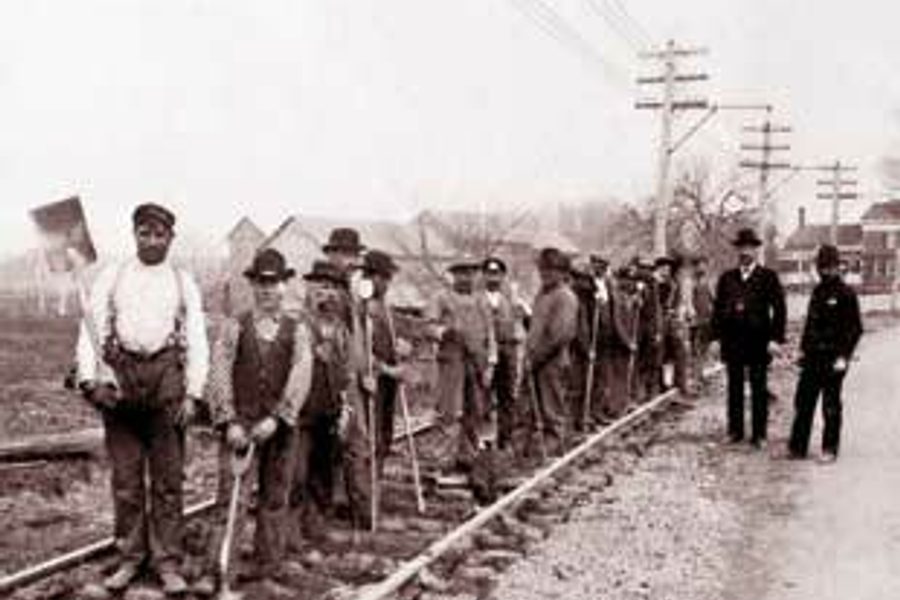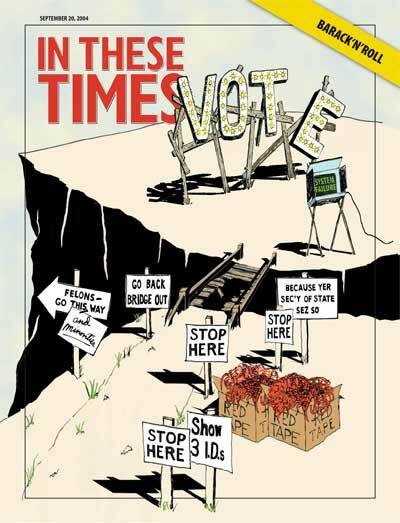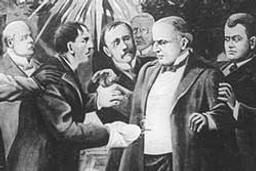
In the decades following the Civil War, the northern half of the United States experienced massive social transformation. Large-scale manufacturing took off, European immigrants poured into cities and the ranks of industrial wage laborers exploded. When the economy boomed, a handful of men made great fortunes in railroads, steel and finance. When the economy stumbled, workers had few options. Previous generations of white Americans tended to be artisans or small farmers who could subsist off the land or family during hard times. Wage laborers, on the other hand, suffered immediate deprivation when work became scarce. They took to the road in search of jobs and sought out charity when none could be found.
In The New Victorians, Stephen Pimpare describes how this transformation set off a debate about economics, inequality and poverty. On one side, struggling workers pressed for a generous system of public relief to ameliorate the extremes of the new economy. Often, they found allies among elected officials who were anxious to please their working-class constituents and build urban political machines. In Philadelphia, public relief spending doubled between 1850 and 1870. In New York City, expenditures doubled during the 1860s alone. But this expansion also faced a concerted counter-attack in the 1870s and 1880s, from a group of intellectuals, political reformers and charities. Through a network of Charity Organization Societies, the reformers sought to make poor relief rational, scientific — and stingy. Robert Treat Paine of Boston gave the group its motto: “Not Alms, but a Friend.”
The debate turned on a simple question: What causes poverty? Advocates of public assistance blamed economic factors: Deprivation happened when the economy failed to provide jobs. Accordingly, those who profited most from the economic system had a responsibility to help those who could not find enough work. The Charity Organization Societies told a different story. Poverty, their members insisted, was a moral failure on the part of the poor. As Mrs. Glendower Evans argued at a charity conference in 1889, “Too often it will be found that the root of the evil lies in the character of the poor themselves — in habits of laziness, shiftlessness, intemperance or vice, which have reduced them to an irregular and meagre subsistence.”
The Charity Organization Societies pressed private charities to focus on moral reform rather than simply provide aid and argued that government-run public assistance was counter-productive. “Indiscriminate almsgiving is a crime against society,” complained reformer William Slocum in 1882. Reformers promoted this message through conferences, journals and the popular press — most of them underwritten by wealthy employers. The effort paid off. By the late 1890s, 39 of the 50 largest U.S. cities had reconfigured cash assistance programs to reduce amounts of public aid and subsidize moral reform. As the poet John Boyle O’Reilly wrote, in verse, “organized charity scrimped and iced / in the name of a cautious, statistical Christ.”
Alongside this history, Pimpare draws parallels with its 20th Century counterpart: the campaign against welfare that culminated in the Personal Responsibility and Work Opportunity Reconciliation Act of 1996. Like the charity reform movement, the anti-welfare forces were organized and bankrolled by a group of wealthy individuals and institutions, such as the Coors and Olin foundations. They too built a network of organizations to share information and make a case to the public. And they made the morality of the poor — a question that had receded from view during the New Deal through the Great Society — central to the debate. Anti-welfare authors such as Charles Murray in Losing Ground demonized “welfare mothers” for laziness and bearing children out of wedlock. And they blamed federal public assistance programs, especially Aid to Families with Dependent Children (AFDC), for creating a “welfare trap” that kept recipients in poverty and promoted anti-social values. These “new Victorians” got many of their wishes in 1996, when Congress voted to abolish AFDC, drive down caseloads through punitive sanctions and replace federal guarantees with block grants to state governments.
Pimpare offers a defense of generous public assistance programs on the grounds that they benefit all working-class people. Aid gives a worker with a marginal income an option — the opportunity to avoid the labor market when it pays too little or proves demeaning and the so-called “marriage market” when potential spouses are abusive or inadequate. This, Pimpare argues, boosts incomes across the low-wage workforce because employers must offer higher wages to find employees. “American businesses, especially those that needed low-wage, low-skilled workers, clearly understood the economic benefits of welfare reform just as their counterparts had over a century ago.” Too often, welfare reform simply means replacing union workers with “workfare” recipients making sub-minimum wages.
There is considerable truth to this argument, but I think it should come with significant qualification. Opposition to U.S. welfare policy as it existed before 1996 did not come exclusively from the corporate-funded conservative propagandists profiled by Pimpare. Some liberals worried that providing long-term public assistance to healthy adults violated norms of fair play and mutual responsibility that they used to defend other redistributive public policies. Others thought that the specific design of AFDC created economic incentives — for example, to take under-the-table work that could be hidden from welfare agencies instead of jobs in the formal economy — with unfortunate social consequences. Still others believed (incorrectly) that welfare mostly served African-Americans and resented it on racist grounds. By turning the entire debate into a contest between neo-Victorians and their ideological opposites, Pimpare fails to address the public opinion in between. As a result, he never explains why AFDC proved so vulnerable to attack in the first place.
After all, AFDC was not the only government program to face a concerted propaganda assault in the past few decades. But conservatives have been much less successful at undermining public support for, say, minimum wage laws — even though they impact low-wage labor markets directly. Nor have numerous think-tank campaigns succeeded in demolishing Social Security or doing away entirely with environmental protection or workplace safety legislation. (Indeed, the substantial regulatory and welfare state that grew up in the mid-20th century made the wage effects of the 1996 welfare reform far less significant than the cutbacks of public aid in the 19th century were.) It is worth wondering why attacks on AFDC led to its abolition while many other government programs have withstood, thus far, the concerted attack on so-called big government. Doing so might produce a more complicated and ambiguous history of policy-making in the late 20th century. But it could also help advocates of generous public aid design the kind of programs that can withstand the inevitable counterattacks from the right.
SPECIAL DEAL: Subscribe to our award-winning print magazine, a publication Bernie Sanders calls "unapologetically on the side of social and economic justice," for just $1 an issue! That means you'll get 10 issues a year for $9.95.





